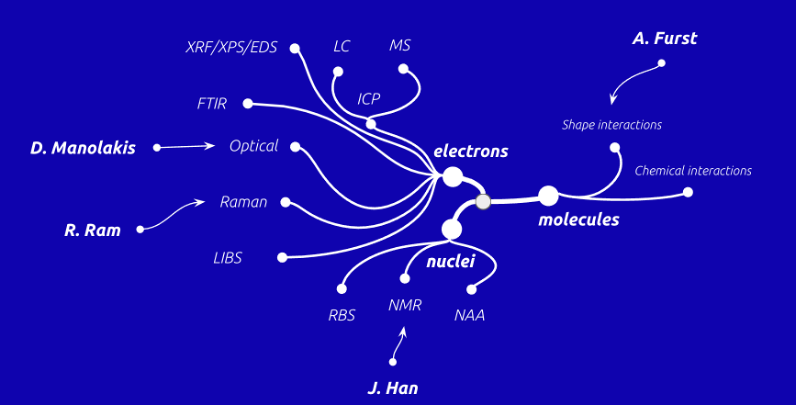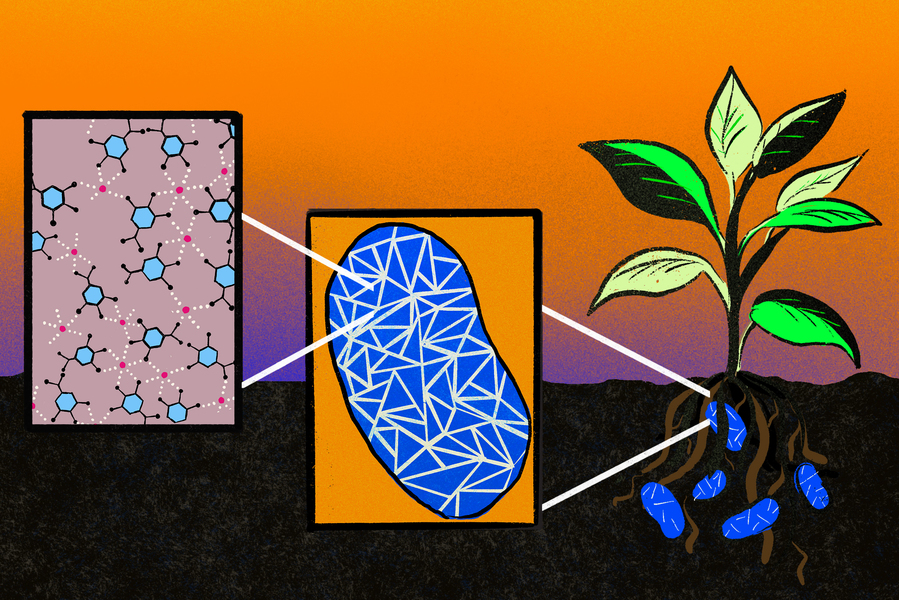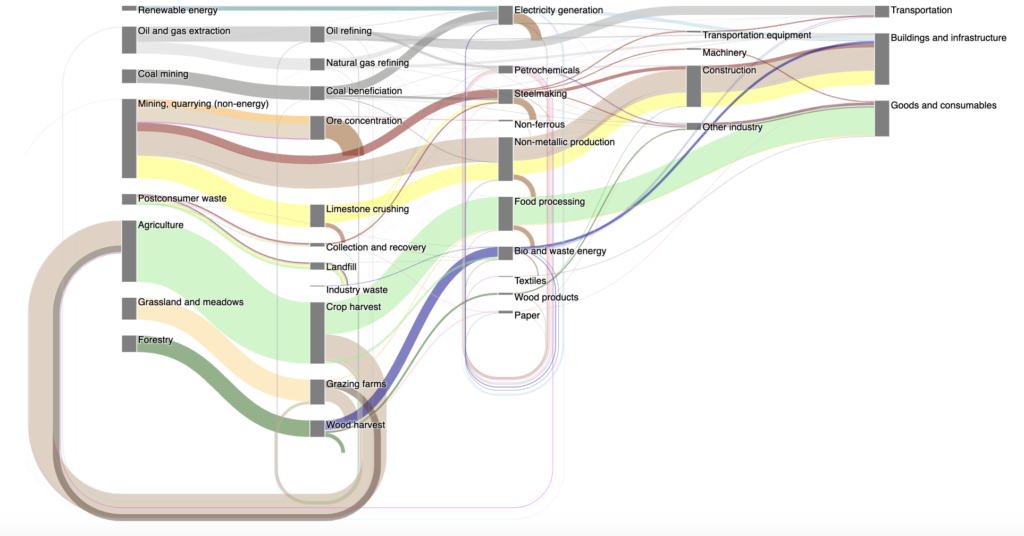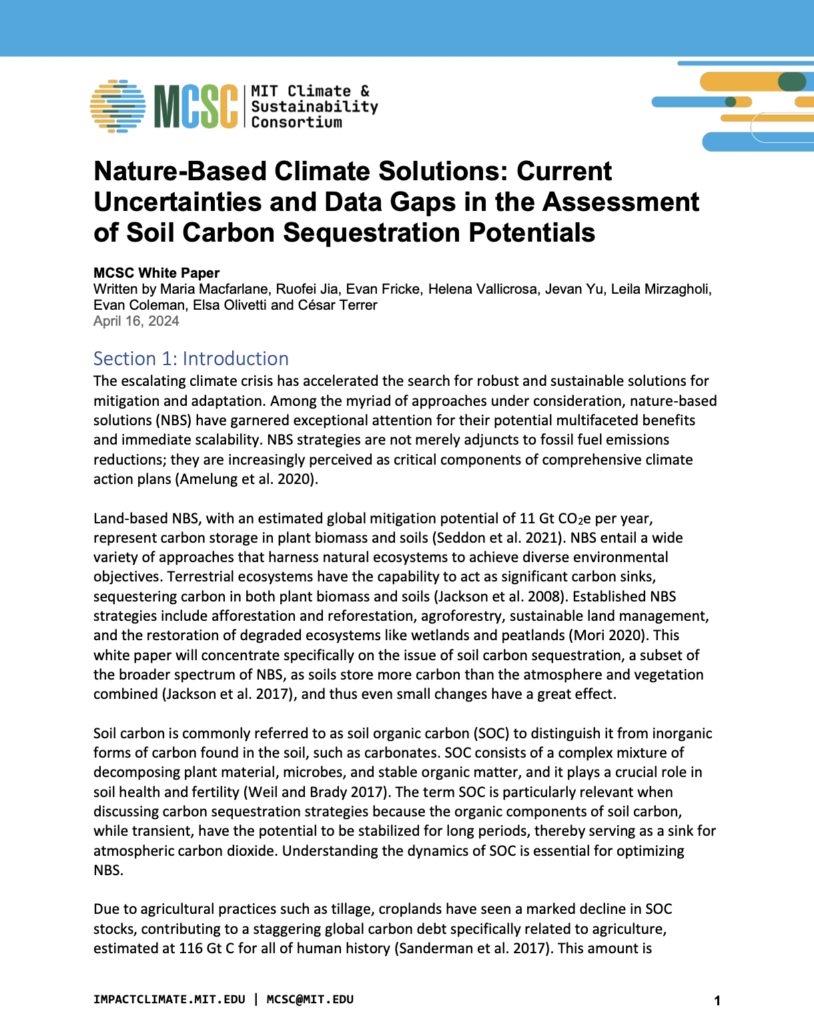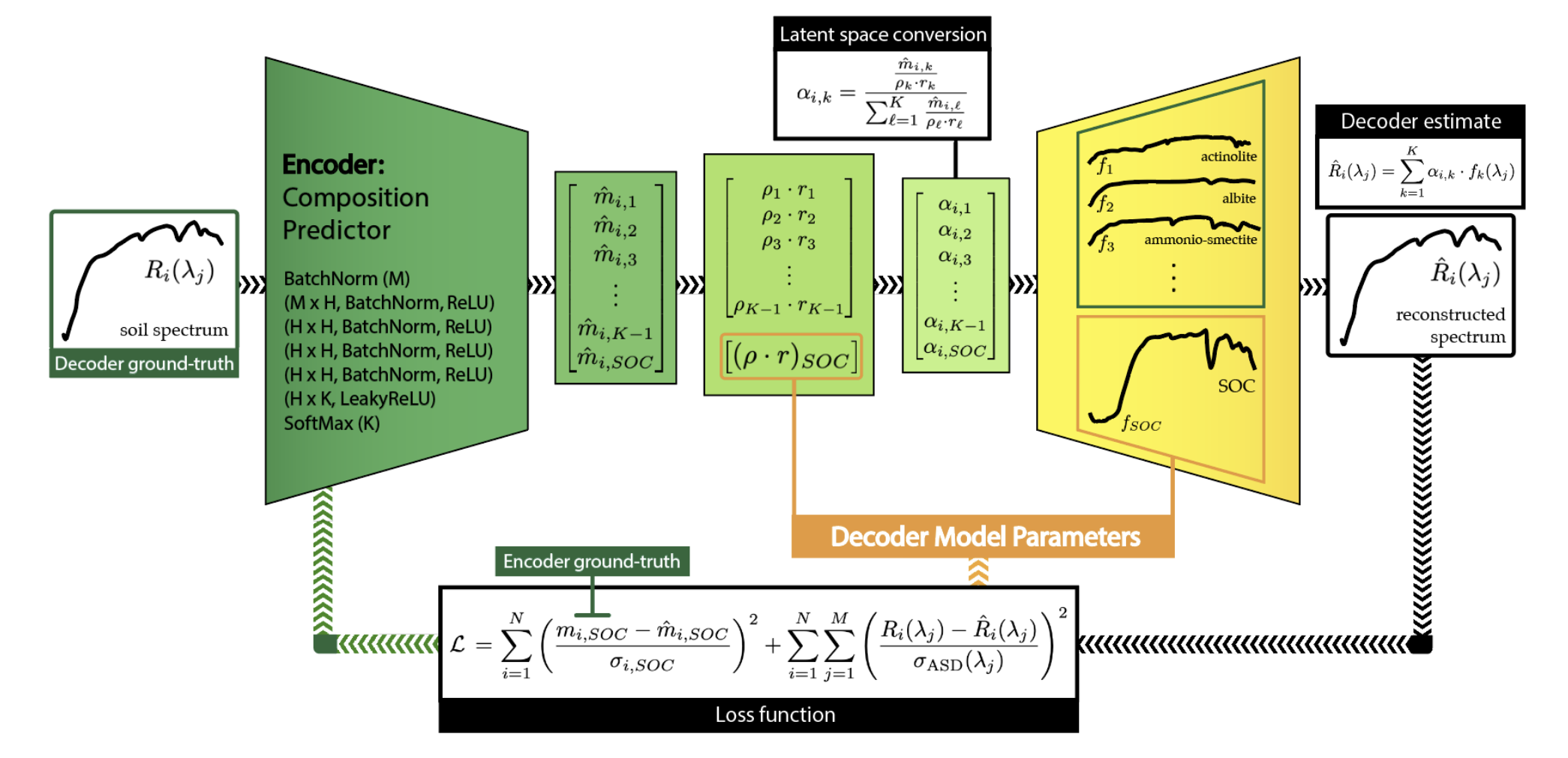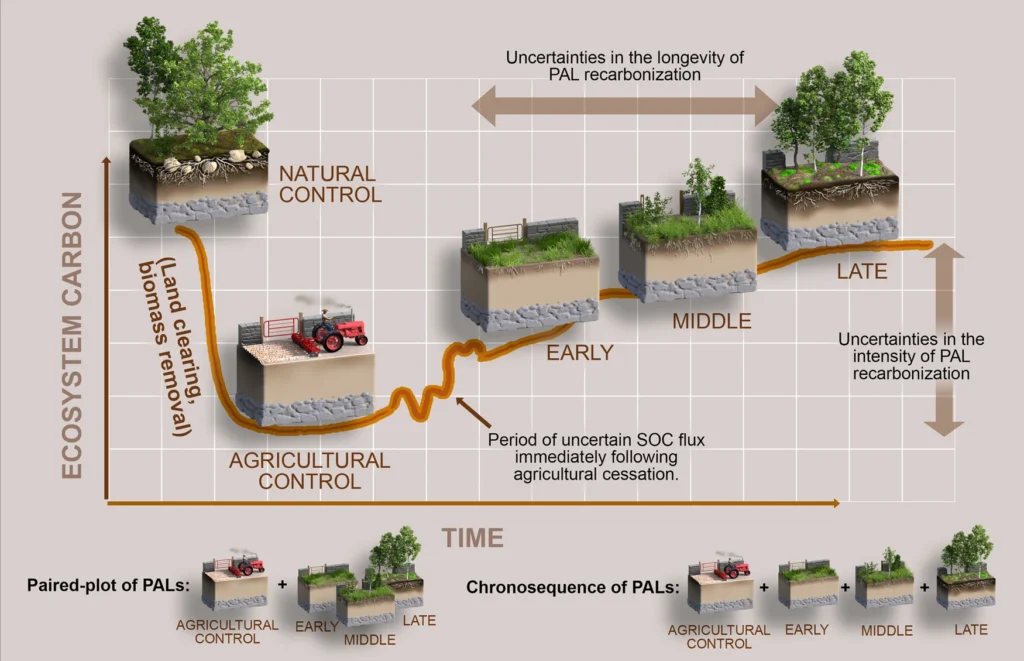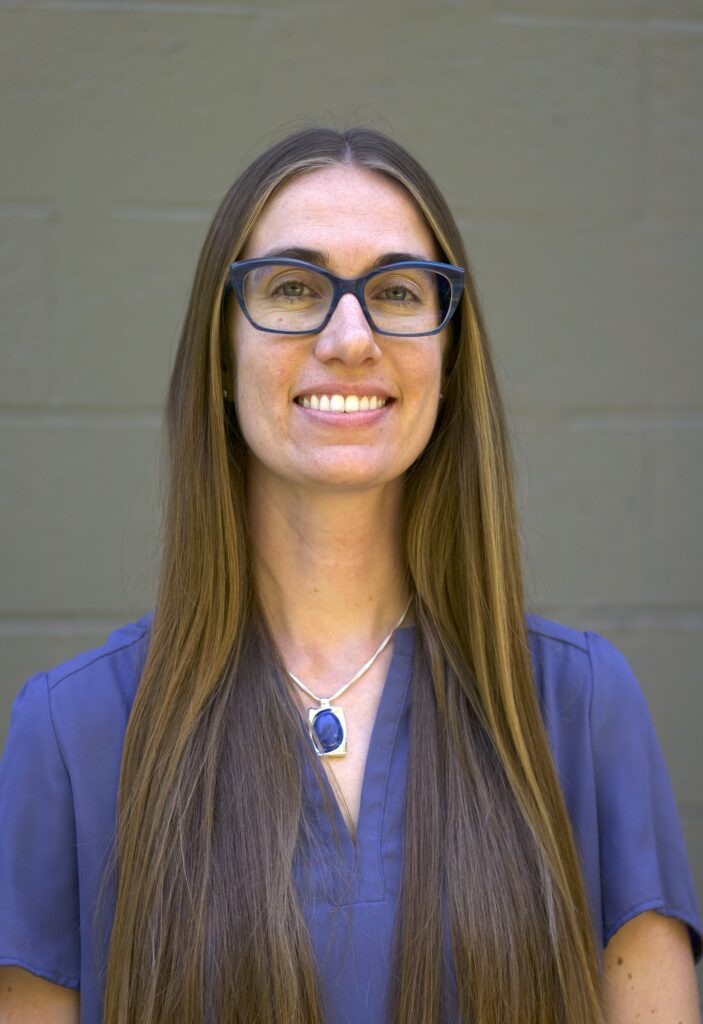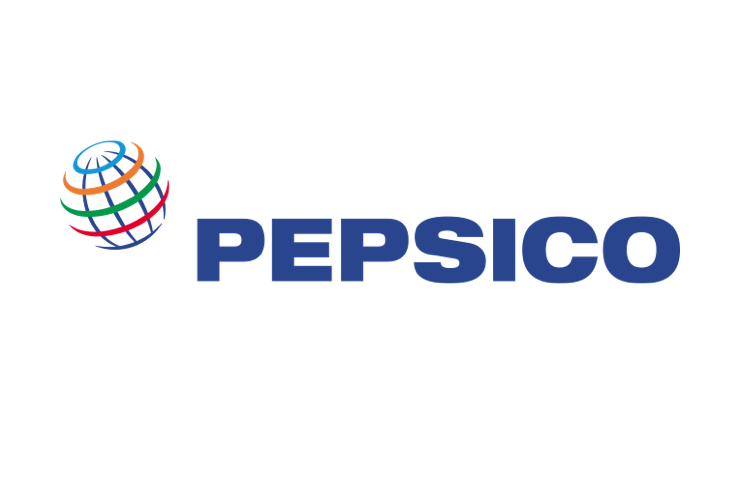Nature-based solutions
Projects
Impact Fellow/Core
- Measurement methodologies to track carbon and nitrogen fluxes (Coleman)
- Developing and evaluating scalable measurement procedures which can track NBS-relevant data across NBS-relevant ecosystems and environments
- Sustainable agriculture and biodiversity (Bischoff)
- Guiding efforts to quantify, and set goals around, how enhancing and strengthening biodiversity is complementary to mitigating and adapting to climate change
- Developing microbial biosensors to measure nitrate and other N species in soil, in close collaboration with the MIT Voigt lab
Seed
2024
- Optimizing biological nitrification inhibitors for the suppression of N₂O emissions from agricultural soils (McRose)
- This proposal will address key knowledge gaps in our understanding of how biological nitrification inhibitors alter N₂O release from pure microbial cultures, simple microbial consortia, and crop soils. The team’s is to provide quantitative information needed to assess the feasibility of using these inhibitors and to identify optimal management practices. They are particularly interested in producing results that can be translated to management practices, such as changes in the timing of BNI additions or alterations in irrigation patterns (which largely control soil oxygen) that might make these interventions most effective.
- Hyperspectral remote sensing of soil organic carbon using machine learning (Wang)
- This study will use hyperspectral satellite data and machine learning to map soil organic carbon (SOC) in the United States, India, and Kenya. By combining data from government and private sources, we aim to identify spectral features for SOC prediction and assess their generalizability across regions. Our goal is to develop a robust predictive algorithm for global SOC mapping and enable the quantification of SOC changes over time to better understand soil carbon dynamics and inform climate change mitigation efforts.
2022
- Quantifying the recarbonization of post-agricultural landscapes (Terrer)
- Exploring the challenges and opportunities in conceiving of post-agricultural landscapes (PALs) as carbon sinks.
-
Seed Award Summary
- Forest restoration: synergies for climate and biodiversity (Terrer, Fricke)
- The restoration of tropical forest holds the largest potential for carbon sequestration. Most deforested areas regenerate via natural dispersal of seeds rather than tree planting. 90% of tropical tree species rely on animals for seed dispersal, but this process is disrupted by animal biodiversity decline and habitat fragmentation. Although small-scale ecological studies suggest that seed dispersers and their movement explain differences in the carbon storage of regenerating forests, data limitations have prohibited quantification of this process at broad scales. This limitation obscures a potentially strong link between biodiversity declines and the climate crisis and complicates decision-making regarding forest restoration methods. In preliminary analyses of ground-based data across the tropics, we find that variation in seed dispersal can explain major variation in carbon sequestration. We will use further analyses of ground-based data, satellite-based data, and modeling to understand the synergies between solutions that address the climate and biodiversity crises. Our results will support decision making to enhance natural carbon sinks through active and passive forest restoration.
- Coatings to protect and enhance diverse microbes for improved soil health and crop yields (Furst)
- This team is developing an inexpensive, easy-to-apply protective coating that enables the production and transport of microbes under non-ideal conditions. The coating self-assembles on individual microbes and is derived from components that are generally recognized as safe by the FDA. This advance will enable the global restoration of soil microbiomes and increase crop yields from treated farmland.
- Carbon Sequestration through Sustainable Practices by Smallholder Farmers (Zheng)
- This research takes a data-driven, community-centered, iterative approach to address several key questions in the incentive design: (i) identify local operational and behavioral constraints for interpretability and practical implementation, (ii) how to account for inherent data uncertainty and fluctuations in soil carbon measurements, and (iii) how to incorporate the influence of nonlinearity in biological processes.
- ECO-LENS: AI for urban biodiversity tracking (Fernandez)
- This team proposes the implementation of a biodiversity detection and classification framework using AI and multi-stakeholder engagement to overcome urban biodiversity mapping challenges. The project will focus on the context of two Colombian cities located in biodiversity and carbon-rich ecosystems, namely, Quibdó and Leticia.
Sponsored Research Consortia
- Data synthesis for optimizing and enhancing soil carbon uptake (Terrer)
- Apple, Cargill, and PepsiCo sponsored work beyond the NBS pathway’s purview, to build data synthesis frameworks and machine learning toolkits for soil carbon prediction, inference, and optimization at global scale
Contact Us
Get in touch with the MCSC
If you would like more information, please e-mail mcsc@mit.edu.
Who’s studying this
MCSC Impact Fellow
MCSC Impact Fellow

